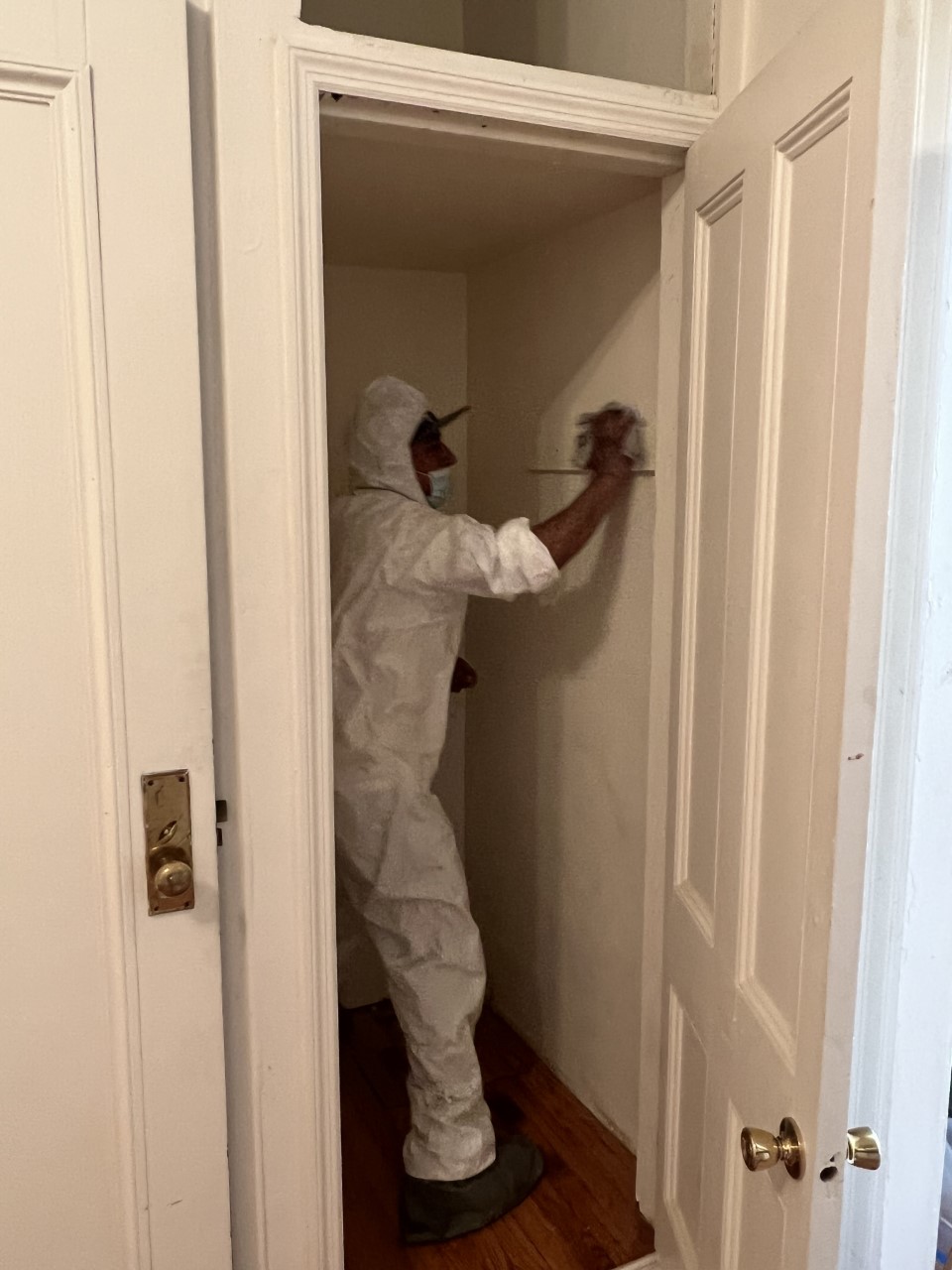Essential Devices and Strategies for Efficient Lead Infraction Cleaning
Attending to lead violations successfully demands a thorough method that blends the right devices with calculated methodologies. The very first step entails outfitting workers with Individual Protective Tools (PPE) to secure their wellness. Simultaneously, the usage of specialized cleaning devices, such as HEPA vacuums and lead-specific cleaner, is essential for comprehensive impurity elimination. Effective containment techniques, including plastic bed linen and negative air stress systems, are necessary to avoid the spread of dangerous products. Furthermore, safe disposal methods and stringent adherence to regulative guidelines guarantee liable handling of harmful waste. What are the nuanced techniques that absolutely make a distinction?
Individual Protective Devices
Individual safety tools (PPE) is an important part in the efficient management of lead contamination cleanup. PPE serves as a crucial barrier, protecting workers from the unsafe effects of lead direct exposure, which can lead to serious health effects. The vital PPE for lead cleaning includes respirators, protective apparel, gloves, and eye security. Each sort of devices is particularly created to reduce various threats connected with lead particles and dirt.
Respirators, particularly those outfitted with HEPA filters, are vital for filtering air-borne lead fragments, preventing inhalation. Protective clothing, consisting of coveralls and disposable matches, prevents lead dust from adhering to workers' garments, reducing the threat of secondary contamination.
Moreover, strenuous training on the proper use and upkeep of PPE is important. Workers must be educated on donning and doffing treatments to stay clear of contamination. Regular inspections and replacements of PPE components are required to maintain their protective capacities, making certain a secure and certified cleaning procedure.
Specialized Cleanup Devices

One more essential tool is the wet/dry vacuum cleaner, which can effectively cleanse up both dust and fluid pollutants. These vacuum cleaners usually include HEPA filters to give an added layer of safety and security. Damp cleans or tack fabrics are additionally essential for surface area cleansing; they are particularly created to catch and hold lead particles, reducing the threat of spreading out contamination.
For even more persistent down payments, specialized lead-removal cleaning representatives are needed. These agents are developed to damage down lead particles, making them simpler to get rid of. Scrub brushes with tough bristles can help in this process, specifically on rough surface areas where lead dust often tends to adhere extra strongly.
Additionally, encapsulants are used to seal lead-contaminated surfaces, avoiding the launch of lead dirt. These specialized paints and coverings are developed to abide by various substrates, offering a long-lasting solution for lead containment.
Effective Containment Approaches
Reliable control techniques are crucial in reducing the spread of lead contamination throughout clean-up tasks. Executing durable containment methods guarantees that lead fragments do not migrate to untouched locations, consequently protecting both workers and the setting (DOH & HPD Lead Violation Removal NYC).

To improve control, encapsulants can be applied to surface areas that are not being gotten rid of or disrupted. These specialized finishings bind lead dust, lowering its availability for resuspension. Additionally, all workers should use ideal Personal Safety Tools (PPE), consisting of respirators and disposable matches, to avoid contamination spread.
Safe Disposal Practices
Making sure secure disposal methods is an essential component in the management of lead contamination clean-up. Appropriate disposal alleviates the threat of lead coming back the setting and jeopardizing public health and wellness (DOH & HPD Lead Violation Removal NYC).
Delivering lead waste needs adherence to stringent standards. Using licensed hazardous waste providers ensures that the materials are taken care of responsibly. Documents, including manifests detailing the kind and quantity of waste, need to go along with shipments to track the waste from the website of origin to its last disposal destination.
Designated unsafe waste disposal centers are furnished to manage lead-contaminated materials securely. These centers frequently use sophisticated approaches such as stabilization, solidification, or chemical therapy to neutralize the lead before disposal. Landfilling in specialized, lined areas that protect against leachate from infecting groundwater is an usual practice for last disposal.
Regular training for personnel my blog included in lead garbage disposal is essential to preserve safety standards and stop accidental direct exposure. By sticking to these techniques, organizations can dramatically decrease the ecological and health and wellness impacts connected with lead contamination.
Regulatory Conformity Tips

Adhering to governing compliance is extremely important in the successful implementation of lead contamination clean-up. Understanding and complying with federal, state, and neighborhood guidelines guarantees not only the safety and health and wellness of individuals but additionally the legal and financial well-being of the cleaning organization. The Epa (EPA) establishes stringent standards, such as the Lead Improvement, Repair Work, and Paint (RRP) Regulation, which mandates appropriate qualification and training for professionals handling lead-based tasks.
Conformity starts with a thorough assessment of appropriate regulations and regulations. Organizations has to remain updated on any type of legislative adjustments, which can be helped with via regular training sessions and signing up for industry updates. Paperwork is an additional critical compliance facet; keeping comprehensive records of all tasks, including assessment reports, employee training logs, and disposal shows up, is crucial.
In addition, engaging with accredited lead assessors or risk assessors ensures that lead threats are appropriately recognized and alleviated. Employers need to implement using Individual Protective Tools (PPE) and ensure that safety procedures are strictly adhered to. Finally, clear interaction with stakeholders, consisting of staff members, clients, and governing bodies, will certainly cultivate a society of conformity and liability, ultimately adding to a more secure and a lot more reliable lead clean-up process.
Verdict
Reliable lead infraction clean-up Continue requires the integration of specialized tools and strategic methodologies to guarantee security and efficacy. Using HEPA vacuum cleaners, specialized cleaning up agents, and effective control techniques such as plastic sheeting and unfavorable atmospheric pressure systems is essential. Individual protective tools (PPE) safeguards workers from exposure, while secure disposal techniques and stringent adherence to governing conformity are essential for properly managing contaminated materials. Collectively, these actions significantly reduce wellness risks and contribute to a cleaner environment.